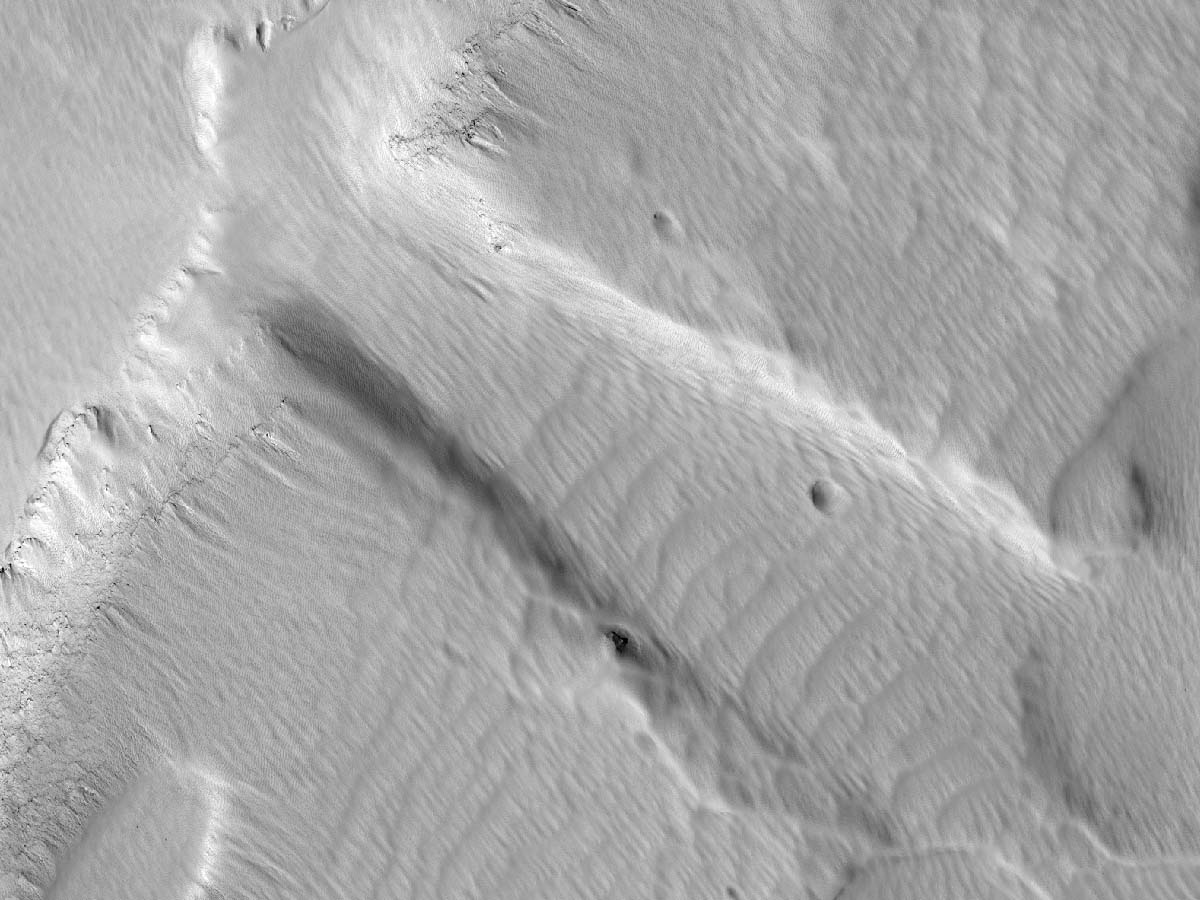Flow

Debunking Hoagland’s “Glass Worms” with HiRISE
May 19, 2014
The always-changing landscape
June 2, 2014
Categories
 A piece of Mars: This is a bit of the flank of Arsia Mons, one of Mars’ great volcanoes. The big changes in topography are ancient relics of erosion by lava and great tectonic pulling. What I like is that the scene (1.58×1.18 km, or 0.98×0.74 mi) is covered in bright dust (looks a bit like snow here, doesn’t it?). And that dust has been eroded by wind channeled through the topography. So here we see signs of flow, both from ancient lava and from more recent wind. (HiRISE ESP_031944_1790, NASA/JPL/Univ. of Arizona)
A piece of Mars: This is a bit of the flank of Arsia Mons, one of Mars’ great volcanoes. The big changes in topography are ancient relics of erosion by lava and great tectonic pulling. What I like is that the scene (1.58×1.18 km, or 0.98×0.74 mi) is covered in bright dust (looks a bit like snow here, doesn’t it?). And that dust has been eroded by wind channeled through the topography. So here we see signs of flow, both from ancient lava and from more recent wind. (HiRISE ESP_031944_1790, NASA/JPL/Univ. of Arizona)




3 Comments
Hi Doc, Why do you consider this surface be dust and not sands?
William
Hi William
Good question. By aeolian standards, “dust” is a particle small enough to be blown up in the air for extended periods of time (technically, its settling rate is lower than the wind speed, give or take). “Sand” is made of grains large enough that, while the wind can move them along, it can’t suspend them in the air (unless the wind get super strong, which is a pretty rare event). There are more technical terms for sand and dust, but that will do for this discussion.
The main reason I think this stuff is dust and not sand is because it has a low thermal inertia. Thermal inertia is a property of a material that dictates how quickly it gains and loses heat (I = (k*rho*c*)^0.5, where I = thermal inertia, k = thermal conductivity, rho = bulk density, and c = heat capacity). Soft fluffy surfaces, such as those covered in meters or more of dust, heat up quickly when the sun rises and cool off quickly when the sun sets. Hard surfaces, like those covered in rocks, bedrock, or cemented materials, take longer to heat up and hold their heat longer after the sun goes down.
It also happens that particle size is a strong function of thermal conductivity under martian atmospheric pressures. Since we can measure the temperature of the martian surface, we can use them to model the material properties of the surface. Low nighttime temperatures mean a surface covered by a thick blanket of small-grained material, like dust, and that’s exactly what we see on the big martian volcanoes.
Thanks…btw, would you go so far as to say the image area surface has a consistence of our Moons lunar surface in this particular instance? I always remember those initial Armstrong’s boot imprints and how perfectly, perfect they looked!